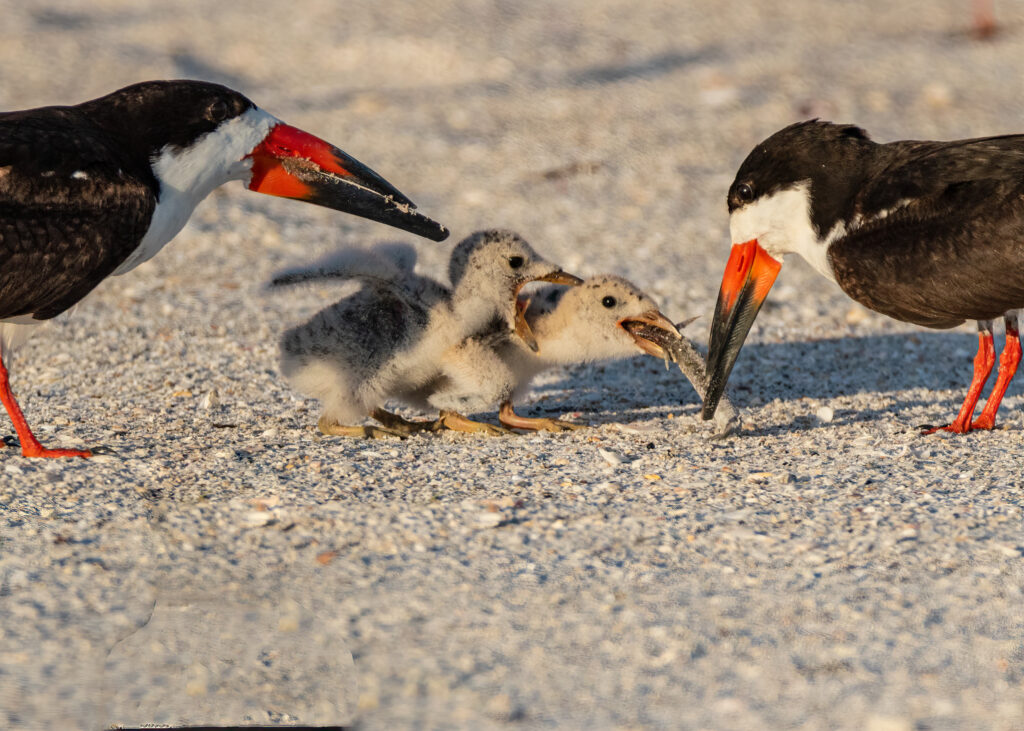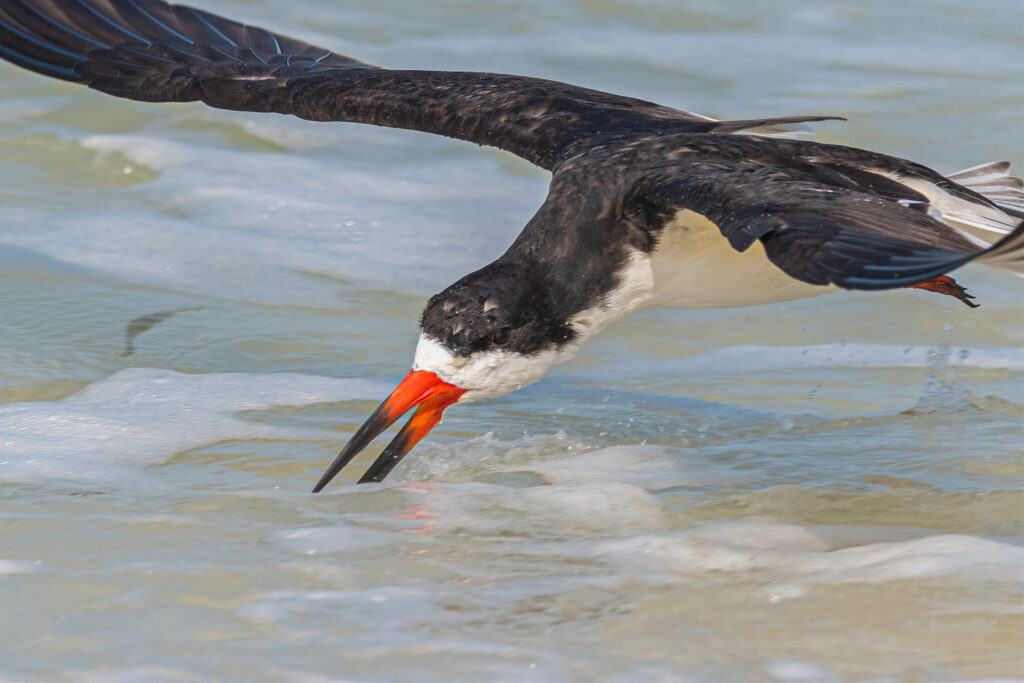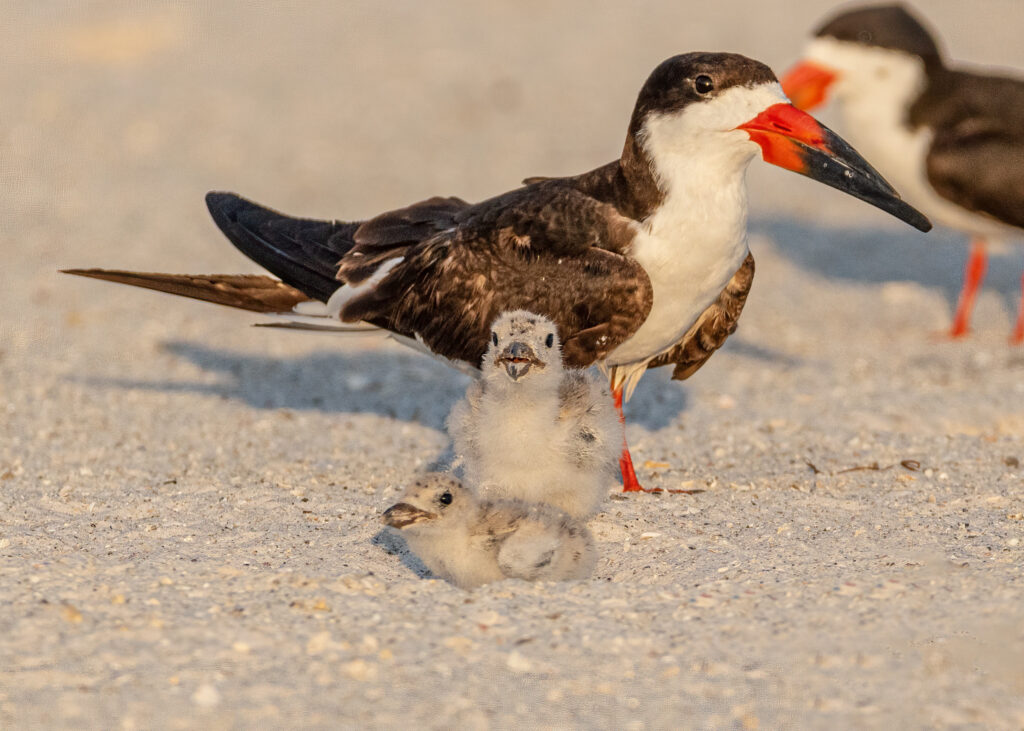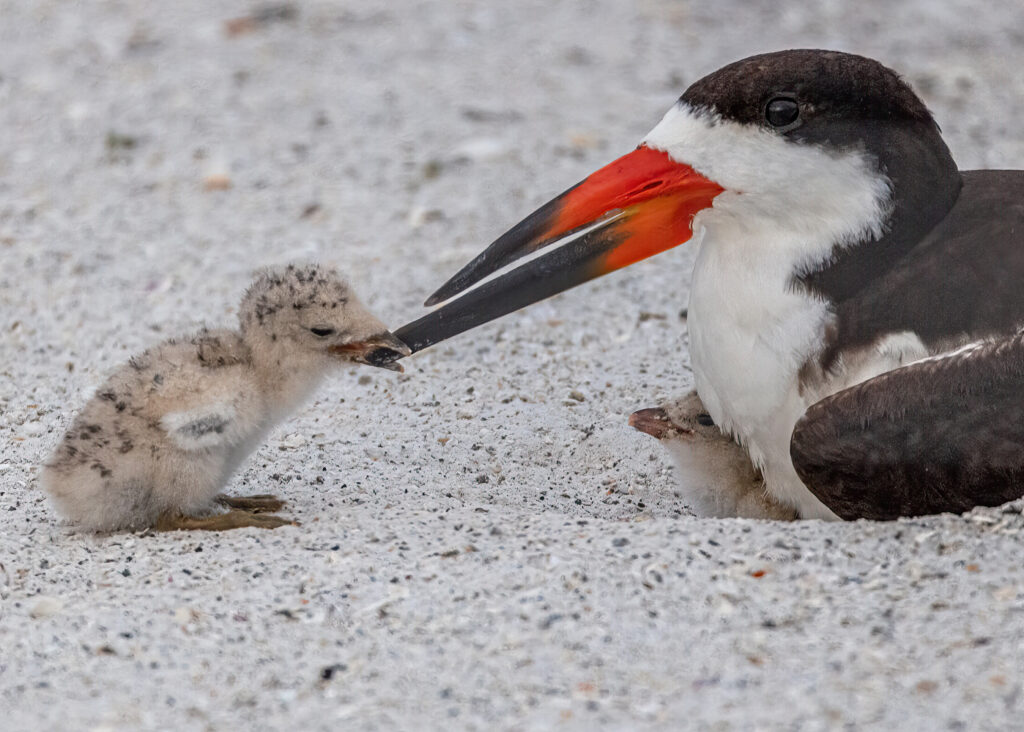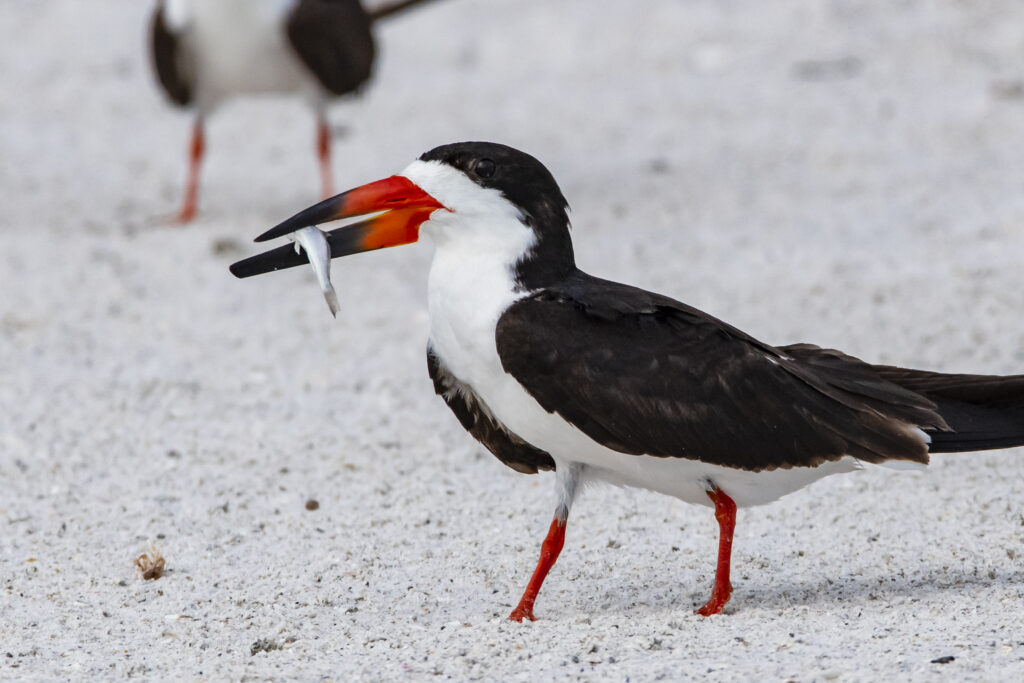
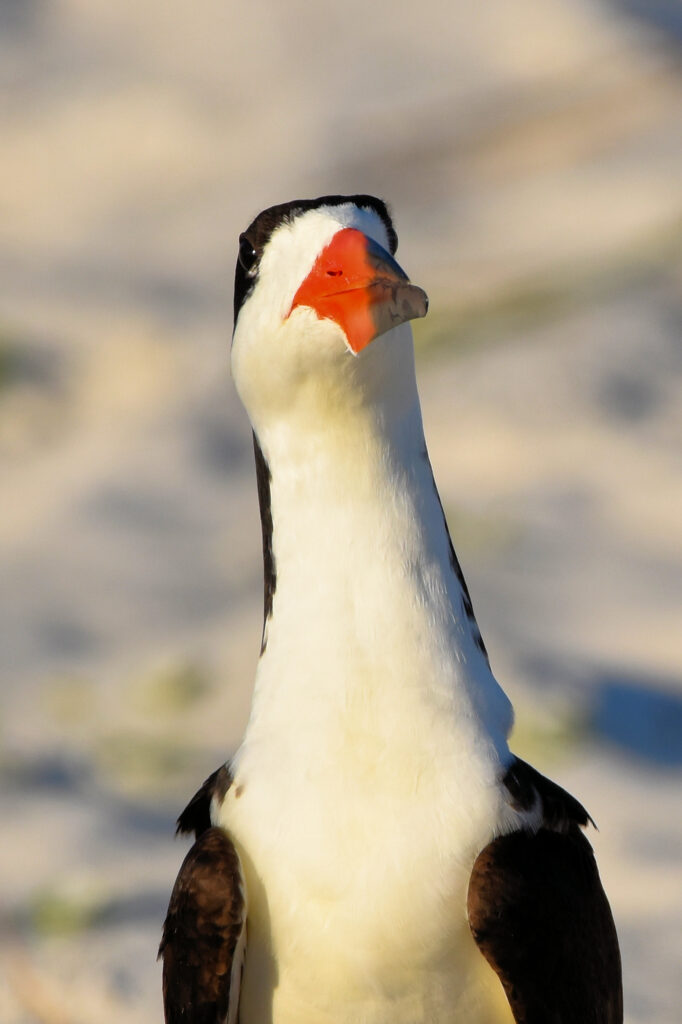
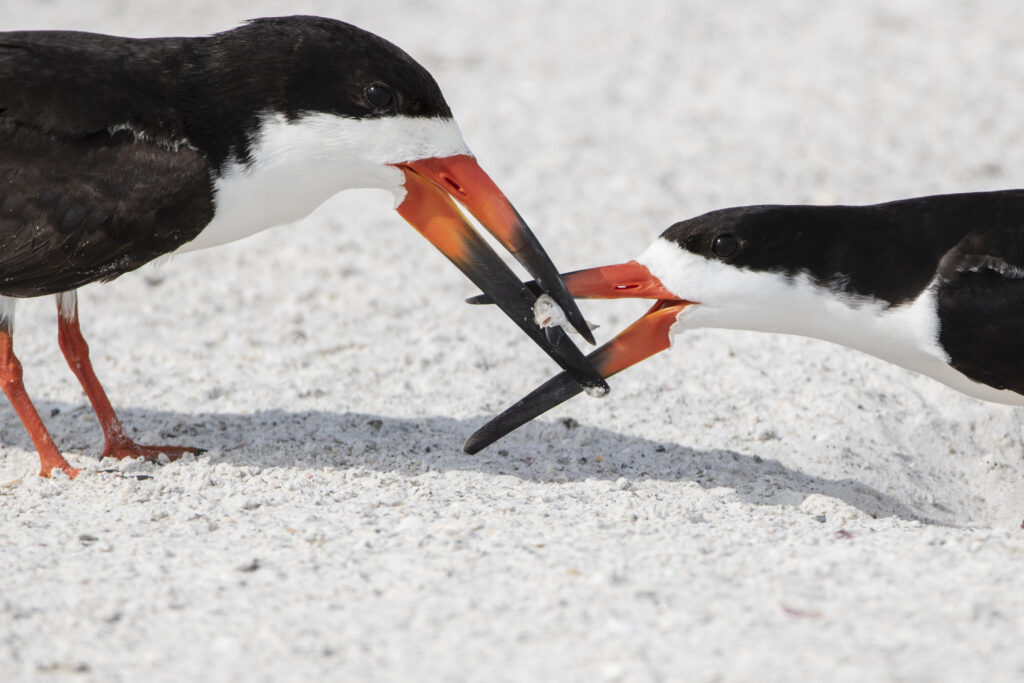
Florida black skimmers are a protected species and belong to the laridae family with terns and gulls. A favorite to many because of their acrobatic flight. It is fun to watch their courtship rituals, aerial maneuvers and the way they skim the surface of the water to catch fish, often having to weave around beach goers. The black skimmer’s unique lower bill is longer than the upper bill. The long, slender bill will cut through the water and when it senses prey, the upper bill will snap closed to secure it. Male and females look the same, except the males tend to be larger.
Black skimmers nest in colonies. Pinellas County is fortunate to be home to several colonies. They will return each spring to reunite with their mate, nest and raise their chicks through the summer. New banding data indicates that black skimmers maybe monogamous continuing to breed with the same partner in following seasons. Female black skimmers may lay 1-5 eggs that are creamy colored with black or brown spots. Both partners will take turns incubating the eggs. Since the eggs are laid in open sand, they need to be constantly shaded from the sun. Black skimmer eggs take about 22-24 days to hatch. Soon parents will start feeding chicks small fish, which they swallow whole. If the parent has a fish that might be too large, they will use their beaks to tenderize it, making it softer and easier for the chick to swallow. In two and a half weeks, black skimmers take their first flight and by week five, they are fully fledged and flying. Parents still feed them until they perfect their feeding technique about two weeks later. In two to four years’ time, these chicks will be full-fledged adults and will start breeding. Black skimmers generally live to between 5 and 15 years of age, but have a maximum lifespan of 20 years. (Burger and Gochfeld, 1990: Gochfeld and Burger, 1994)
Caution: Don’t get too close to a nesting black skimmers, they will attack if they feel that the nests or chicks are threatened. Sometimes attacking alone and sometimes in mobs, Move away quickly if the birds appear agitated.
Threats: Black skimmers face many threats, human harassment, coastal development, dogs, cats and from predators like the coyotes, raccoons, crows, gulls and herons. Their eggs and young chicks will only survive for a short time without adult protection. Young chicks are the same color as the sand, they nap during the day and people walking, running and biking or in vehicles, have been known to step on or run over the small chicks.
Dogs: Dogs are prohibited from most Pinellas County Beaches, but warning signs are few. Dogs, off leash, have been known to destroy the nests of an entire colony. Black skimmers see no difference between a cute, friendly small dog and a coyote. A dog’s presence, even in the distance, can cause the adult black skimmers to vacate the nest, putting the eggs and/or chicks in jeopardy.
Food and garbage attracts crows and gulls that also prey the eggs and chicks. Please do not feed the birds.
Black Skimmers are protected under State (68a-27.005) AND Federal Law (Migratory Bird Treaty Act) harming these birds, their eggs or young is a violation punishable by up to 60 days imprisonment and/or $500 fine (Sec.379.411). Birds are protected from harm and harassment both inside and outside the roped off nesting area.
Other protected species include the American Oystercatcher, Least Tern, Snowy Plover and nesting sea turtles. Please fill in any holes that are dug in the sand as they may create a trap for chick and turtles.
Report violations at myfwc.com/contact/wildlife-alert/report-online or call 888-404-FWCC (3922) or download FWC report app on your phone. A reward may be possible.
